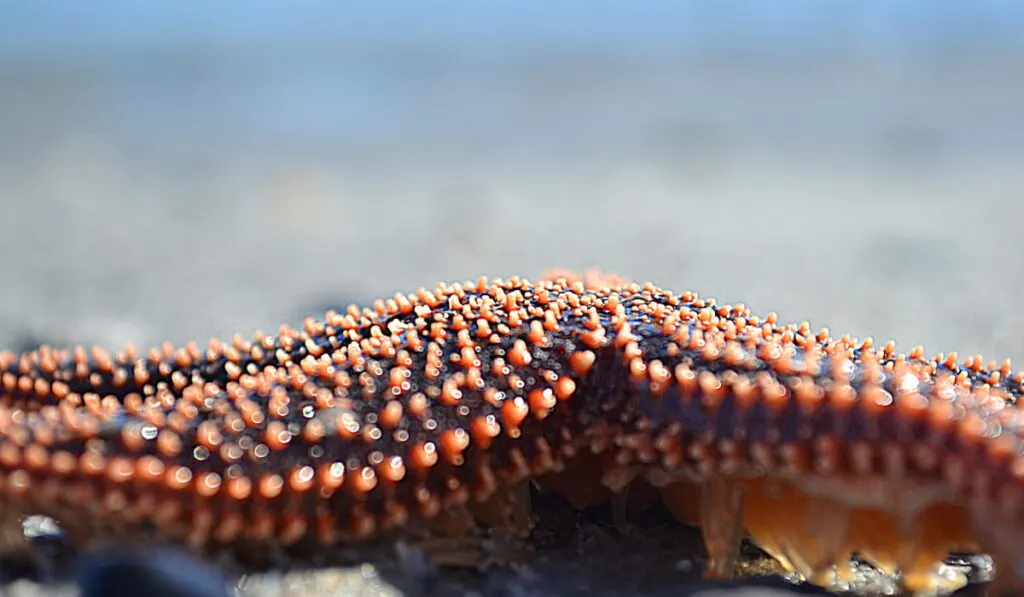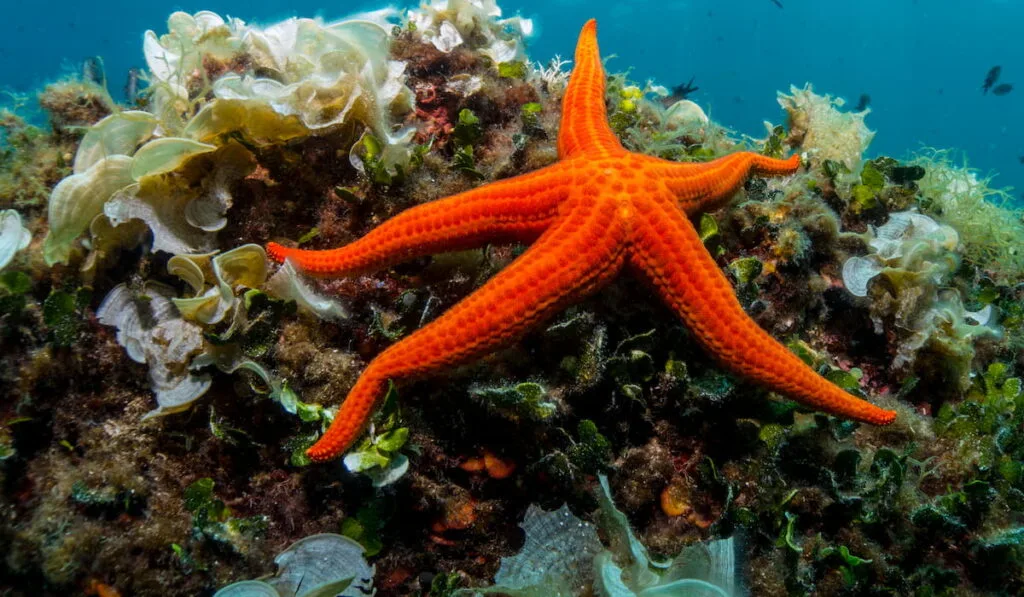Fans of Harry Potter may know the adage: “Never trust anything that can think for itself if you can’t see where it keeps its brain!” (courtesy of Mrs. Weasley). And fans of Spongebob Squarepants have long been taught to associate starfish with being, if not fully brainless, on the “less” side of having brains for sure. But just because you can’t make out a cranium on a starfish, does it really mean they’ve got no brains at all?
No, starfish do not have a brain. The species is without a brain in the traditional sense. However, they aren’t without their own tricks and abilities to act and react. Other systems still exist in a starfish to take the place of some of the functions of the brain.

There are over 2,000 different species of starfish, too. And out of that incredible number, not a single starfish has a legitimate brain. They still function well as undersea individuals, though. Here’s how starfish navigate being alive – but without a real brain.
Table of Contents
Do Starfish Have a Classic Brain?
Technically, starfish are lacking in an organ known as the brain. They do not have a centralized brain, true, but they do have a surprisingly complex nervous system, which comes complete with a nerve ring that runs around the mouth and a radial nerve that runs down each of their arms
These nerves work as a sensory system and as a motor system, reacting to stimuli and keeping a starfish alive through reactionary systems instead of how a brain would.
The ring nerves allow the starfish to maintain balance and they also help with directionality. The sensory nerves come into play to receive sensory input, and the motor nerves kick in to control their tube feet and arm movements.

Because of the “no real brain” fact, though, a starfish cannot plan out movements or actions. Everything is reactionary and is reliant on taking in sensory input in the moment.
How Do Starfish Function?
Despite having no discernable brain as we are accustomed to, starfish work around that. They still use the outside world to guide their functions and they simply process input and information differently.
Instead of a brain, they have a surprisingly impressive nervous system. This system takes in, interprets and reacts (similar to how a brain would) to those outside influences and stimuli.
And if you think a lack of a brain would mean they can’t perform basic physical functions; you would be wrong. For one, they are able to dictate food digestion outside of the body.
Starfish Circulation
They don’t have blood, either, but have found a way around that, too: they pump seawater in and throughout their body in place of blood. From that, the water itself is able to deliver and circulate necessary nutrients throughout the starfish’s body, keeping its organs in working condition.
This feature also keeps the sea star compact, as it saves from the need for space for a more complex circulatory system. And, as they literally live in seawater, the starfish is never without this important resource. Also, because of that, a starfish can’t live in freshwater. They are saltwater organisms only!
Starfish Digestion

In keeping with the idea of staying small and efficient, and having only a tiny mouth on the underside of their body, starfish have adapted yet again to be able to eat things that are technically larger than their mouths can fit.
Their stomachs digest food outside of the body, allowing it to be broken down small enough so it can fit inside the mouth. After ingesting, it is further broken down inside the body.
Starfish Vision
Without a brain, too, it seems strange, but starfish have unique eyes! Well, eyespots, that is. While not eyes in the traditional sense, they possess very small eye spots at the end of a starfish’s appendage: a small dot, black or red, measuring only around half a millimeter in width.

The spots are actually a cluster of light-collecting units that take in light (and react to dark) and use that information to generally gauge distance and surroundings, as well as the apparent outline of larger objects.
Some starfish also have separate, individual photoreceptor cells located on other parts of their bodies besides the arms. These cells will respond to light even if a situation occurs where their eyespots are covered.
If you want to learn more about starfish vision, check out my article: Do starfish have eyes.
Just because the starfish as a species don’t have a brain doesn’t mean they aren’t complex creatures. In fact, not having a brain just means they have more unique functions and systems that defy expectations!
Starfish may not be able to plan or think, but they can react and, in a
rudimentary way, they reason their way through life. And with a lifespan of around 35 years, that can be a lot of life for a starfish to amble its way through!
